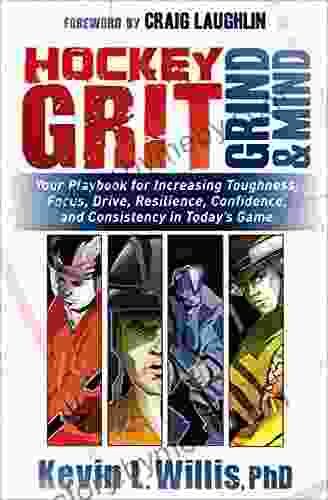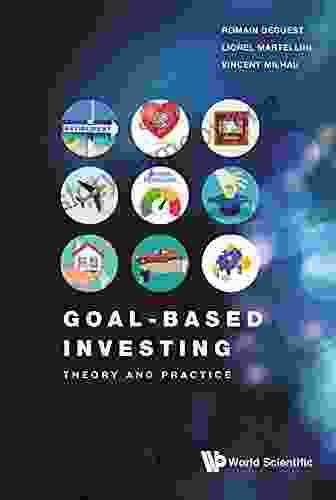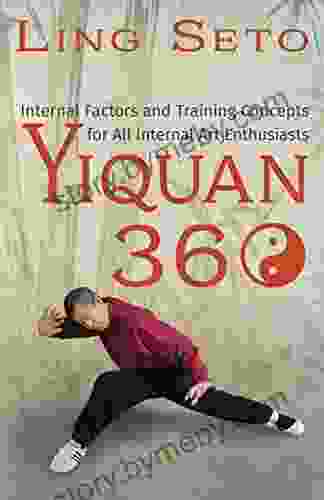Embodied Imagination: Space, Embodiment, and the City in the 21st Century

: Space, Embodiment, and the City in the 21st Century
The 21st century has witnessed a profound transformation of the relationship between space, embodiment, and the city. The rise of new technologies, the increasing interconnectedness of global networks, and the changing demographics of urban populations have all contributed to a rethinking of the ways in which we experience and inhabit urban space.
5 out of 5
| Language | : | English |
| File size | : | 3599 KB |
| Text-to-Speech | : | Enabled |
| Screen Reader | : | Supported |
| Enhanced typesetting | : | Enabled |
| Word Wise | : | Enabled |
| Print length | : | 219 pages |
| Lending | : | Enabled |
This book brings together a diverse group of scholars from across the social sciences and humanities to explore the complex and dynamic relationship between space, embodiment, and the city in the 21st century. The essays in this volume examine a wide range of topics, including the changing nature of urban mobility, the impact of digital technologies on our experience of space, the role of embodied practices in shaping urban life, and the ways in which the city itself is a site of embodiment.
Chapter 1: The Changing Nature of Urban Mobility
The way we move through and experience the city is constantly evolving. In the 21st century, new technologies have emerged that have made it easier and faster to travel around urban areas. This has led to a number of changes in the ways in which we interact with the city.
For example, the rise of ride-sharing services like Uber and Lyft has made it possible to get around the city without owning a car. This has had a number of positive consequences, including reducing traffic congestion and making it easier for people to get to destinations that are not well-served by public transportation. However, it has also raised concerns about the impact on traditional taxi services and the working conditions of ride-share drivers.
Another major change in urban mobility is the increasing popularity of walking and cycling. In many cities, governments are investing in infrastructure to make it easier and safer for people to walk and bike. This is motivated by a number of factors, including the desire to reduce traffic congestion, improve air quality, and promote physical activity.
Chapter 2: The Impact of Digital Technologies on Our Experience of Space
Digital technologies are having a profound impact on the way we experience space. In the 21st century, we are increasingly spending time in virtual worlds, interacting with people and places that are not physically present. This is changing the way we think about space and our place in it.
For example, the rise of social media has made it possible to connect with people from all over the world. This has led to a sense of global interconnectedness that was not possible in the past. However, it has also raised concerns about the impact of social media on our privacy and mental health.
Another example of the impact of digital technologies on our experience of space is the rise of augmented reality (AR) and virtual reality (VR). AR and VR technologies allow us to experience digital content in the real world or in a completely virtual environment. This has the potential to revolutionize the way we interact with the city.
Chapter 3: The Role of Embodied Practices in Shaping Urban Life
The way we move through and experience the city is not just shaped by technology. Our bodies also play a significant role in shaping our urban experiences. The way we walk, sit, and interact with our surroundings all have an impact on the way we experience the city.
For example, the way we walk can reveal a lot about our social status and our relationship to the city. People who walk quickly and with purpose are often seen as being more confident and successful, while people who walk slowly and hesitantly may be seen as being more vulnerable or marginalized.
The way we sit can also reveal a lot about our relationship to the city. People who sit upright and with their shoulders back are often seen as being more confident and assertive, while people who slouch or hunch forward may be seen as being more submissive or withdrawn.
Chapter 4: The City as a Site of Embodiment
The city itself is a site of embodiment. The way we build and design our cities has a profound impact on the way we experience our bodies. For example, the way we design our streets and sidewalks can make it easier or harder for people to walk or bike. The way we design our buildings can make it easier or harder for people to interact with each other.
The city is also a site of embodied memory. The way we experience the city is shaped by our past experiences and interactions with the urban environment. For example, the way we navigate the city is often based on our memories of previous experiences. The way we interact with people in the city is often based on our memories of previous interactions with similar people.
: The Future of Space, Embodiment, and the City
The relationship between space, embodiment, and the city is constantly evolving. The 21st century has brought about a number of significant changes to this relationship, and these changes are likely to continue in the years to come.
As we move into the future, it is important to be aware of the ways in which space, embodiment, and the city are changing. This awareness will help us to design and build cities that are more sustainable, equitable, and enjoyable for all.
5 out of 5
| Language | : | English |
| File size | : | 3599 KB |
| Text-to-Speech | : | Enabled |
| Screen Reader | : | Supported |
| Enhanced typesetting | : | Enabled |
| Word Wise | : | Enabled |
| Print length | : | 219 pages |
| Lending | : | Enabled |
Do you want to contribute by writing guest posts on this blog?
Please contact us and send us a resume of previous articles that you have written.
 Book
Book Novel
Novel Page
Page Chapter
Chapter Text
Text Story
Story Genre
Genre Reader
Reader Library
Library Paperback
Paperback E-book
E-book Magazine
Magazine Newspaper
Newspaper Paragraph
Paragraph Sentence
Sentence Bookmark
Bookmark Shelf
Shelf Glossary
Glossary Bibliography
Bibliography Foreword
Foreword Preface
Preface Synopsis
Synopsis Annotation
Annotation Footnote
Footnote Manuscript
Manuscript Scroll
Scroll Codex
Codex Tome
Tome Bestseller
Bestseller Classics
Classics Library card
Library card Narrative
Narrative Biography
Biography Autobiography
Autobiography Memoir
Memoir Reference
Reference Encyclopedia
Encyclopedia Leon Smith
Leon Smith Love Belvin
Love Belvin Sharon A Wynne
Sharon A Wynne Lance Esplund
Lance Esplund Victoria Hallerman
Victoria Hallerman Lauren Gamble
Lauren Gamble Lindsay Levin
Lindsay Levin Ray D Waddell
Ray D Waddell Laurent Bernut
Laurent Bernut Martha Wallace
Martha Wallace Laurence Cox
Laurence Cox Sherri Rifkin
Sherri Rifkin Ray Mancini
Ray Mancini Linda Lael Miller
Linda Lael Miller World Bank
World Bank Linda Gassenheimer
Linda Gassenheimer Sara Saedi
Sara Saedi Koos Stadler
Koos Stadler Rick Atkinson
Rick Atkinson Larry Greene
Larry Greene
Light bulbAdvertise smarter! Our strategic ad space ensures maximum exposure. Reserve your spot today!

 Arthur C. ClarkeLunchtime Chronicles Dirty Mojito: A Gripping Espionage Thriller That Will...
Arthur C. ClarkeLunchtime Chronicles Dirty Mojito: A Gripping Espionage Thriller That Will...
 Branson CarterUnveiling the Tapestry of a Remarkable Life: Memoir - The Autobiographical...
Branson CarterUnveiling the Tapestry of a Remarkable Life: Memoir - The Autobiographical... Julio Ramón RibeyroFollow ·18.9k
Julio Ramón RibeyroFollow ·18.9k Allan JamesFollow ·16.4k
Allan JamesFollow ·16.4k Christian CarterFollow ·19.3k
Christian CarterFollow ·19.3k Colby CoxFollow ·10.2k
Colby CoxFollow ·10.2k Arthur MasonFollow ·16.5k
Arthur MasonFollow ·16.5k Emanuel BellFollow ·15.3k
Emanuel BellFollow ·15.3k William ShakespeareFollow ·10.8k
William ShakespeareFollow ·10.8k David PetersonFollow ·2.8k
David PetersonFollow ·2.8k

 Forrest Reed
Forrest ReedHockey Grit, Grind, Mind: The Ultimate Guide to Mental...
Hockey is a tough...

 Juan Rulfo
Juan RulfoUnlock Your Inner Artist: Embark on a Sketching Journey...
Embrace the Beauty of Nature Through Quick...

 Nathaniel Hawthorne
Nathaniel HawthorneSo You Think You're a Philadelphia Phillies Fan?
The Philadelphia Phillies are one of the most...

 Jeff Foster
Jeff FosterGoal-Based Investing: A Comprehensive Guide to Achieving...
Investing is not...

 Aleksandr Pushkin
Aleksandr PushkinGNOMEDOM: The Future Unfolds (Gnomedom Tales 1)
Escape into the enchanting world of Gnomedom...

 Branden Simmons
Branden SimmonsInternal Factors And Training Concepts For All Internal...
Internal arts, such as Tai...
5 out of 5
| Language | : | English |
| File size | : | 3599 KB |
| Text-to-Speech | : | Enabled |
| Screen Reader | : | Supported |
| Enhanced typesetting | : | Enabled |
| Word Wise | : | Enabled |
| Print length | : | 219 pages |
| Lending | : | Enabled |








